 |
| September 10, 2019 | Volume 15 Issue 34 |
Designfax weekly eMagazine
Archives
Partners
Manufacturing Center
Product Spotlight
Modern Applications News
Metalworking Ideas For
Today's Job Shops
Tooling and Production
Strategies for large
metalworking plants
First all-electric Porsches: Taycan Turbo and
Turbo S
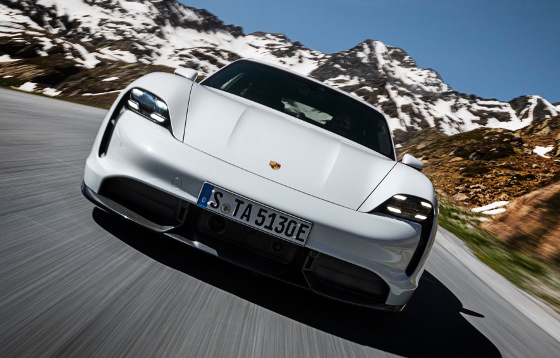
Porsche Taycan Turbo S.
Move over, Tesla. The big kids are coming out to play. The world premiere of the first all-electric Porsches happened on Sept. 4, and the Taycan Turbo and Turbo S are, well, electrifying. The Turbo S will do 0 to 60 in under 3 sec. There are lots of high-end features, with a focus on fast charging and sustainability too.
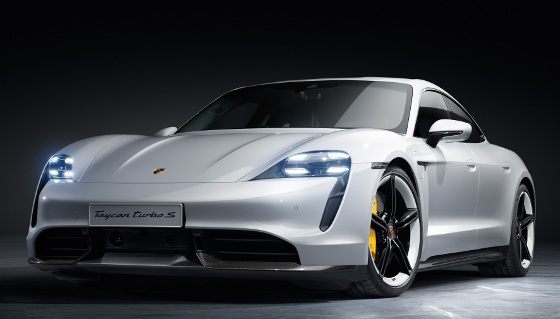
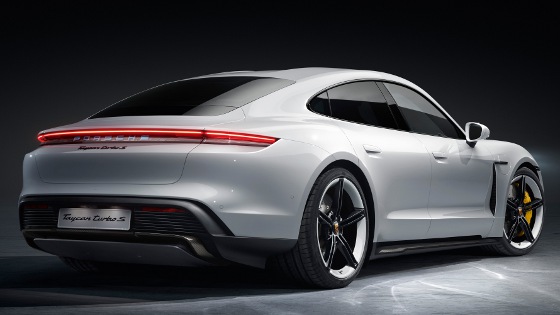
The four-door sports sedan Taycan comes in two models: Taycan Turbo and higher end Taycan Turbo S. Although the turbo moniker may be a little confusing to some, because neither car model has real turbocharger (it's an electric car!), it will be familiar to long-time Porsche fans who recognize as a traditional Porsche turbo top-of-the-line trim.
The flagship 750-hp Turbo S can generate up to 560 kW overboost power in combination with Launch Control and the 670-hp Taycan Turbo up to 500 kW.
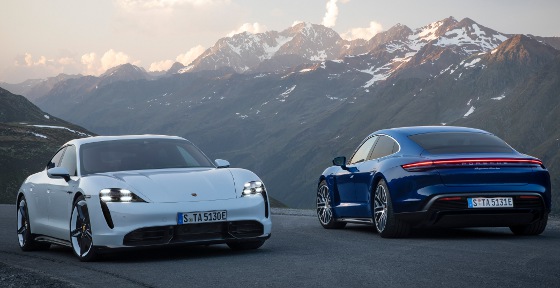
Porsche Taycan Turbo S (left) and Turbo.
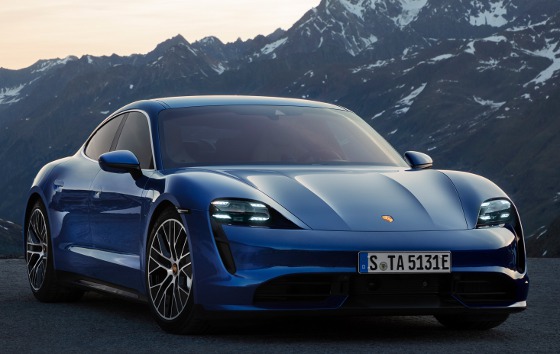
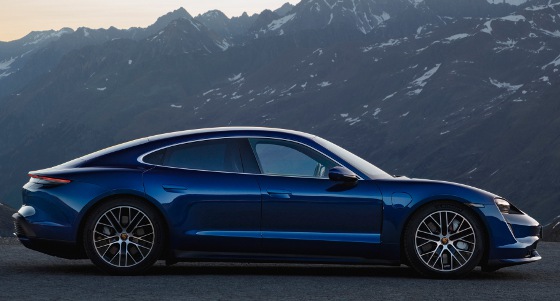
And hold on to your hat. The Taycan Turbo S accelerates from 0 to 100 km/h in 2.8 sec, while the Taycan Turbo does it in 3.2 sec. Porsche says the Turbo S has a range of up to 412 km (256 miles), and the Turbo a range of up to 450 km (280 miles). The top speed of both all-wheel-drive models is 260 km/h (155 mph).
Honestly, the range is a little disappointing. It is nowhere near the 2019 Tesla Model S at 370 miles for a full charge, but we bet the Porsche is better in so many other ways, including charge time, fit and finish, drive experience, and so much more.
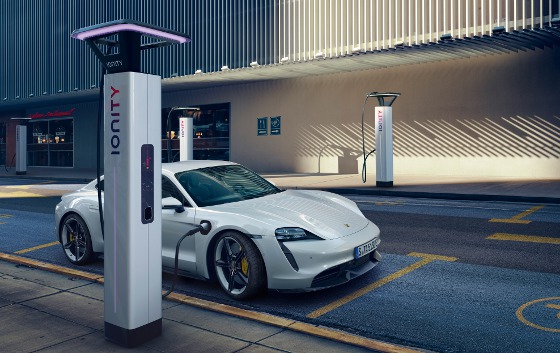
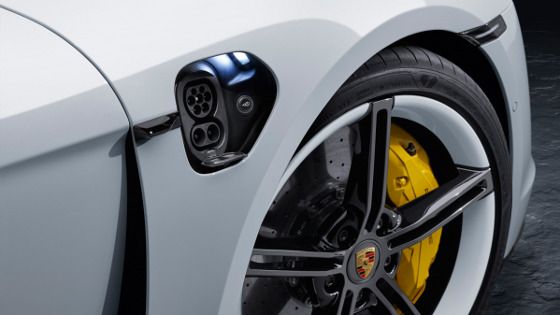
For starters, the Taycan is the first production vehicle with a system voltage of 800 V instead of the usual 400 V for electric cars. Porsche says this is a particular advantage for Taycan drivers on the road, because in just over 5 min. the battery can be recharged using direct current (DC) from the high-power charging network -- available and growing throughout Europe -- for a range of up to 100 km (according to WLTP).
The charging time to go from 5 to 80 percent SoC (state of charge) is 22.5 min. for charging under ideal conditions, and the maximum charging power (peak) is 270 kW. The overall capacity of the Performance Battery Plus is 93.4 kWh. Taycan drivers can comfortably charge their cars with up to 11 kW of alternating current (AC) at home.
The 100-kWh lithium-ion battery in the Tesla S charges to full capacity in about 11 hr at 240 V. At a Tesla Supercharger station, it takes about 30 minutes for a full charge (to 80 percent) at 120 kW. According to the Tesla website, "charging above 80 percent isn't typically necessary" to continue your trip. Charging to 80 percent may extend the total battery life markedly as opposed to completing a full charge every time for most electric vehicles.
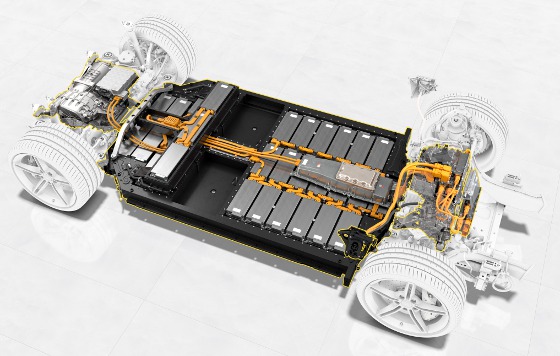
The Taycan Turbo S and Taycan Turbo have two exceptionally efficient electric motors, one on the front axle and one on the rear axle, which make the cars all-wheel drive. Both the range and the continuous power of the drive benefit from the high efficiency of the permanently excited synchronous motors. Porsche says its compact drive module, which contains the electric motors, transmission, and pulse-controlled inverter, has the highest power density (kW per liter of package space) of all electric powertrains on the market today. A special feature of the electric motors is the "hairpin" winding of the stator coils. Porsche says this technology makes it possible to incorporate more copper in the stator, increasing power output and torque while maintaining the same component volume.
The two-speed transmission installed on the rear axle is an innovation developed by Porsche, and so is a first for an all-electric vehicle. First gear gives the Taycan even more acceleration from a standing start, while second gear with a long gear ratio ensures high efficiency and equally high power reserves. This also applies at very high speeds.
Porsche uses a centrally networked control system for the Taycan chassis. The integrated Porsche 4D Chassis Control analyzes and synchronizes all chassis systems in real time. The innovative chassis systems include adaptive air suspension with three-chamber technology including PASM (Porsche Active Suspension Management) electronic damper control, as well as the Porsche Dynamic Chassis Control Sport (PDCC Sport) electromechanical roll stabilization system that includes Porsche Torque Vectoring Plus (PTV Plus).
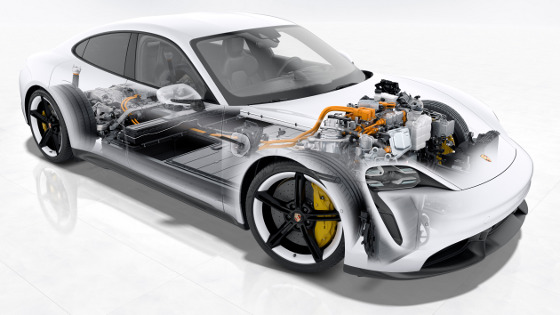
The all-wheel drive control with two electric motors and the energy recuperation system are also unique. At up to 265 kW, Porsche says the potential recuperation power is significantly higher than that of competitors. Driving tests have shown that approximately 90 percent of everyday braking is performed by the electric regenerative system alone -- without the hydraulic wheel brakes being activated. Despite this, the Taycan has some of the largest friction brakes ever fitted to a road car, according to Road & Track. The Turbo S has "carbon ceramic brakes, 16.5 inches up front, 16.1 inches in back. Both brake setups utilize giant 10-piston front and four-piston rear calipers." This design addresses the car's ultra-fast acceleration and provides the necessary brake cooling between rocket thrusts and quick stops, if needed, according to the article.
The profile of the different driving modes basically follows the same philosophy as in other Porsche model series. This is supplemented by special settings that enable optimum use of the purely electric drive. Four driving modes are available: Range, Normal, Sport, and Sport Plus. In addition, individual systems can be configured as required in the Individual mode.
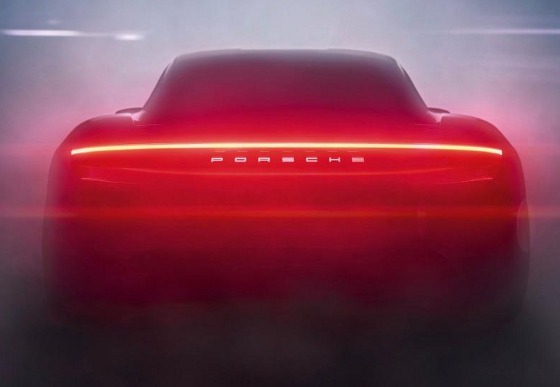
As for looks, the Taycan is slightly smaller than the Porsche Panamera -- and it kind of looks like a slightly widened and flattened Panamera too. The Taycan silhouette is shaped by the sporty roofline sloping downward to the rear. The highly sculpted side sections are also familiar. The sleek cabin, the drawn-in rear C-pillar, and the pronounced shoulders of the wings result in a sharply emphasised rear, typical of the brand. There are also innovative elements such as the glass-effect Porsche logo, which has been integrated into the light bar at the rear.
The cockpit is clean and a completely new architecture for Porsche. There is no giant, in-your-face display that screams, "Hey, I'm trying to be the latest in technology!" There is a lot going on, though. The freestanding, curved instrument cluster forms the highest point on the dashboard. This places a clear focus on the driver axis. A central, 10.9-in. infotainment display and an optional passenger display are combined to form an integrated glass band in a black-panel look.
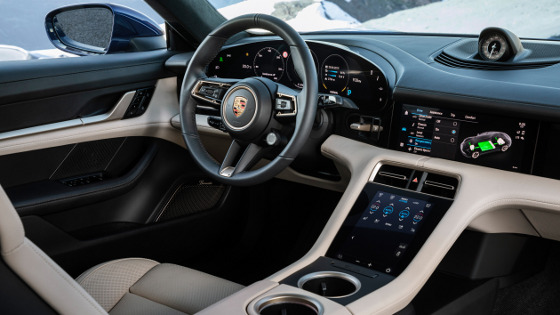
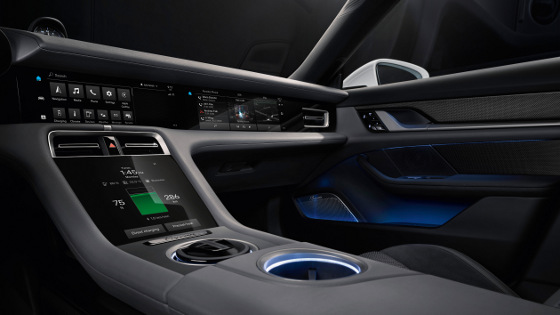
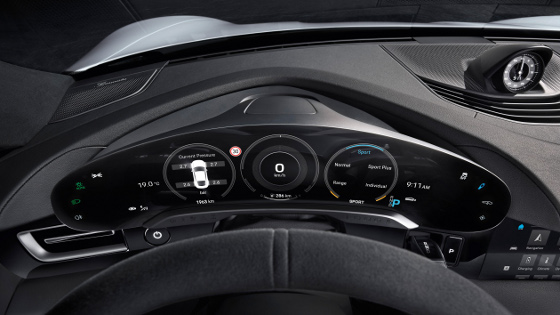
All user interfaces are completely new designs for the Taycan. The number of classic hardware controls, such as switches and buttons, has been greatly reduced. Instead, control is intuitive using touch operation or the voice control function, which responds to the command, "Hey Porsche."
With the Taycan, Porsche offers an entirely leather-free interior for the first time. Interiors made from innovative recycled materials emphasize the sustainable concept of the electric sports car. Recesses in the battery in the rear footwell, called "foot garages," ensure sitting comfort in the rear and allow the low vehicle height typical of sports cars. Two luggage compartments are available: the front compartment has a capacity of 81 liters, and the rear has 366 liters.
"The Taycan is absolutely unique in terms of its proportions, said Michael Mauer, Head of Style at Porsche. "Usually, purely electric vehicles are higher than their conventionally powered counterparts because the relatively heavy and large batteries are positioned in the floor of the vehicle while the occupants sit above them. We were not willing to accept this.
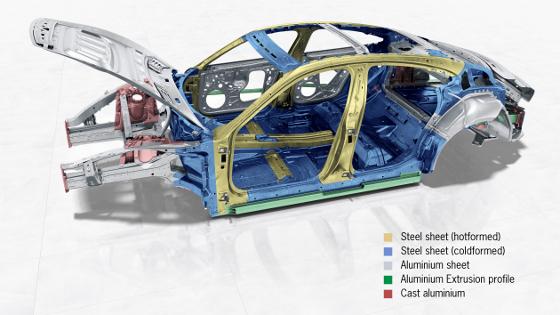
"However, you can't just install the batteries in a different place -- for reasons relating to driving dynamics alone -- as the center of gravity must be as low as possible. Because you also can't just make the vehicle wider, the specific challenge was to position the passengers as low as possible without them having to assume a reclined position like in a Formula 1 racing car.
"We solved this with so-called "foot garages." They enable a comfortable sitting position even in conjunction with the sporty vehicle height. In retrospect, we can say that this so-called package was the greatest challenge. How high can the vehicle be? How long and how wide should it be, how horizontal or upright will the passengers sit? That's what's typically Porsche to me -- this striving to find the ideal solution."
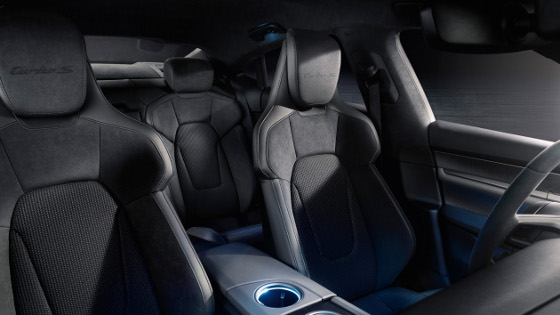
And while most electric vehicles are nearly silent or have a gentle whirring sound, this car has its own handcrafted buzz. The Porsche Electric Sport Sound in the Taycan Turbo S (optional for the Taycan Turbo) makes the vehicle's own drive "sound even more emotionally charged and richer with its innovative character both on the outside and inside," according to its developers. "For this purpose, disturbing noises from the drive architecture are deliberately minimized, and harmonious, emotive sounds matching what the car is doing are amplified." All Taycan models have a standard system to meet the legal sound requirements for pedestrian protection.
VIDEO: Fully electric Porsche Taycan accelerates 0 to 90 to 0 mph on the deck of the USS Hornet.
Prices start at $150,900 for the Porsche Turbo and $185,000 for the Turbo S. That is way more than the highest priced Tesla Model S (P90D) at $110,700, but hey, it's a Porsche and not a Tesla.
'Nuff said.
Learn more on the Porsche site here.
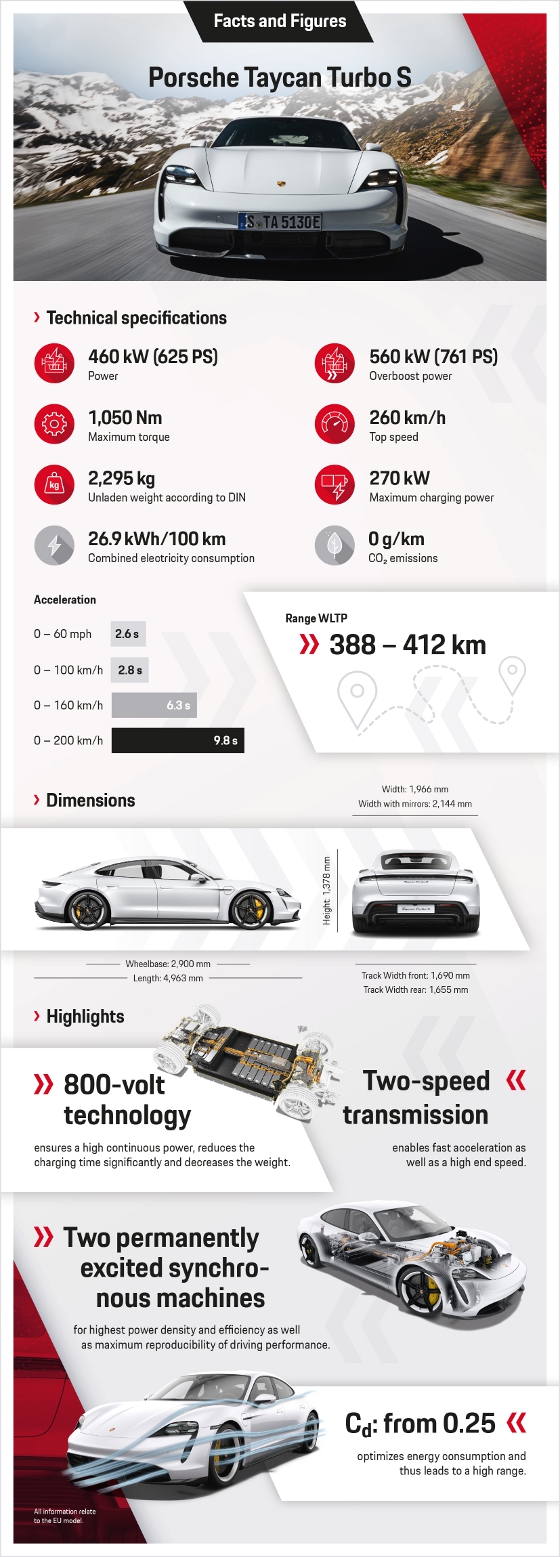
Source: Porsche
Published September 2019
Rate this article
View our terms of use and privacy policy
